teapot
Kazimir Malevich (app. 1922)
From 1744 right down to the Revolution, all luxury porcelain for the Tsar and his court was made in the Imperial Porcelain Factory in St Petersburg. After the Revolution, when the Bolsheviks had removed the Tsar and his government, they confiscated the factory and renamed it State Porcelain Factory. Avant-garde artists were invited to work there, designing dinnerware for the young Soviet republic. Kazimir Malevich, too, was asked to make designs. He applied his artistic principles radically, for instance in a tea pot made up of rectangles, circles and hemispheres.



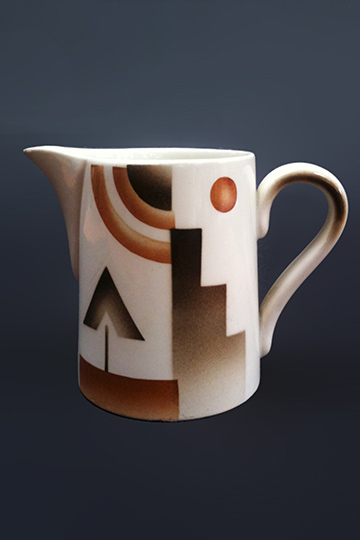
So Constructivism didn’t last long. But its influence was enormous. Via the Bauhaus movement in Germany it found its way into Europe. In the Netherlands the members of the De Stijl movement drank in its principles of abstraction. Without Constructivism Piet Mondriaan’s squares and rectangles or Gerrit Rietveld’s experimental houses and furniture could never have been conceived. For 525 is not the only Dutch dinnerware in which we recognize Constructivist influences. It had followers in Maastricht too, at Sphinx and Société Céramique, even though this was mostly restricted to the decoration used.
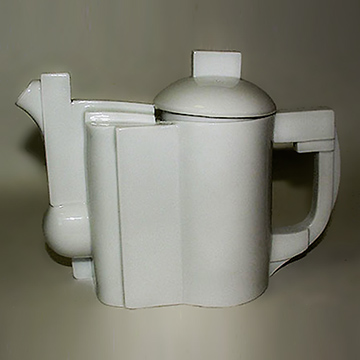
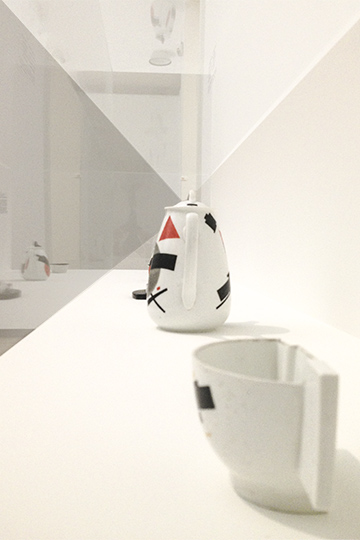
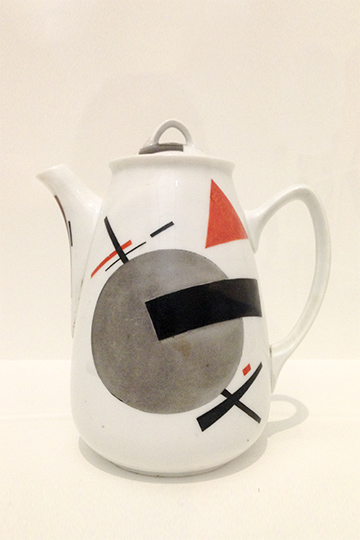
Out of favour
At the time of the Russian Revolution abstract art was very prestigious. Artists were popular and were given free reign to express themselves in their works and theories. But this was not to last. Once the new regime had found its feet, abstract art fell from favour. For the people at large did not understand it at all. Abstract art was considered elitist and so a bad influence on the proletariat. Only the applied art of the Suprematists and Constructivists was tolerated a little longer.
Milk jug with Constructivist decoration 125
The Thirties
Collection Peter Vreeswijk
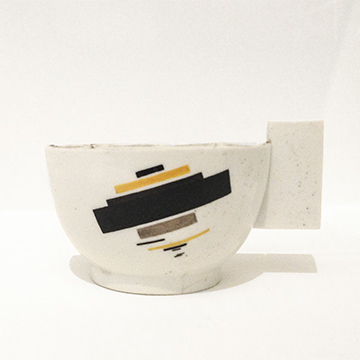
Malevich’s philosophy went a bit too far for the Constructivists, but they were greatly attracted by his abstract works based on simple forms. They were also quite obsessed with the machine for they considered life itself a technical construction. Just as machines are assembled from parts, they assembled their works from basic forms.
Russian avant-garde
Before the first World War, the art scene in Russia was very much in ferment. One movement followed another, often with much uproar. But all avant-garde artist agreed on one thing: they shared a dislike of the old, figurative art. The newest, Constructivist movement also rejected the idea of art as an expression of personal emotions. True art - they believed - was abstract.
teapot
Nikolai Suetin
1922
Their great example was the painter Kazimir Malevich (1878 – 1935). He called himself the Prophet of Suprematism, a philosophy of his own making that looked for the essence in art and claimed to find it in basic geometric forms such as squares, rectangles, triangles and circles. Only basic forms were capable of expressing the deeper truths of life and mind. His most important painting was a black square on a white field.

State Porselain Factory , Sint Petersburg
teacup
Kazimir Malevich (app. 1922)
Goedewaagen tea service 525
A service that really leaves one speechless is 525, even if seen only on an old photo. It looks as though the designer used to be one of the Russian avant-gardists. Perhaps he even teamed up with Malevich for a month or so? An almost perfectly round tea pot with a round little handle standing straight up, as if in jest. The knob on the lid is made up entirely of geometrical forms. Goedewaagen launched this model on the 1932 annual exhibition. But perhaps it was too time-consuming to manufacture, or customers didn’t find it as amusing as we do now, for only very few 525 sets were actually made.
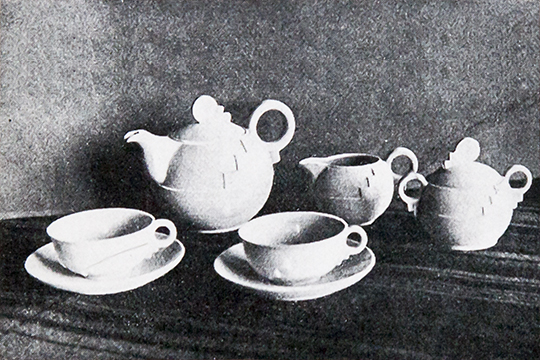
Highlights from 100 years Dutch design
part 3
